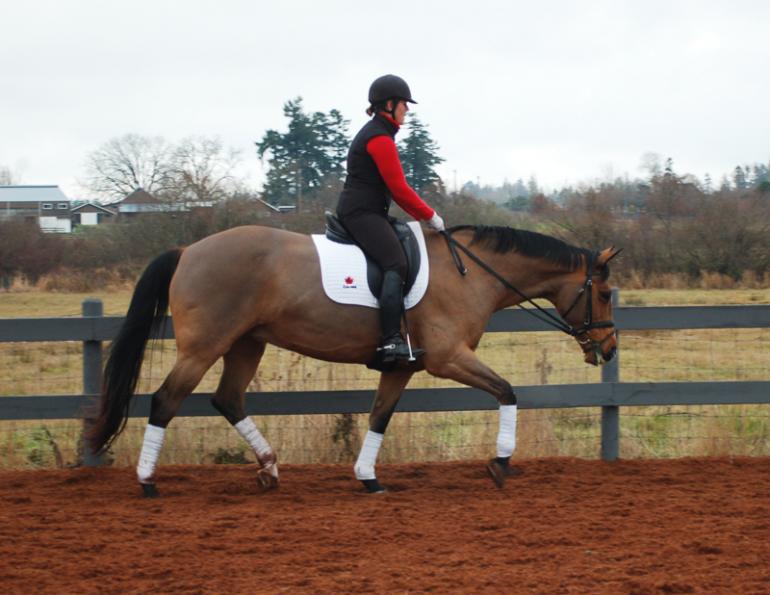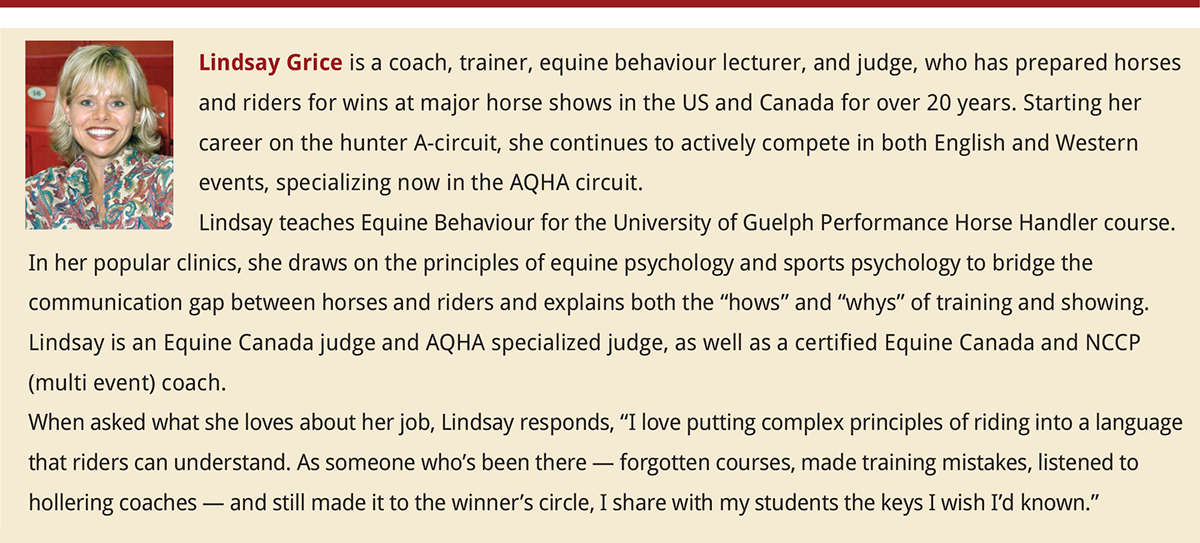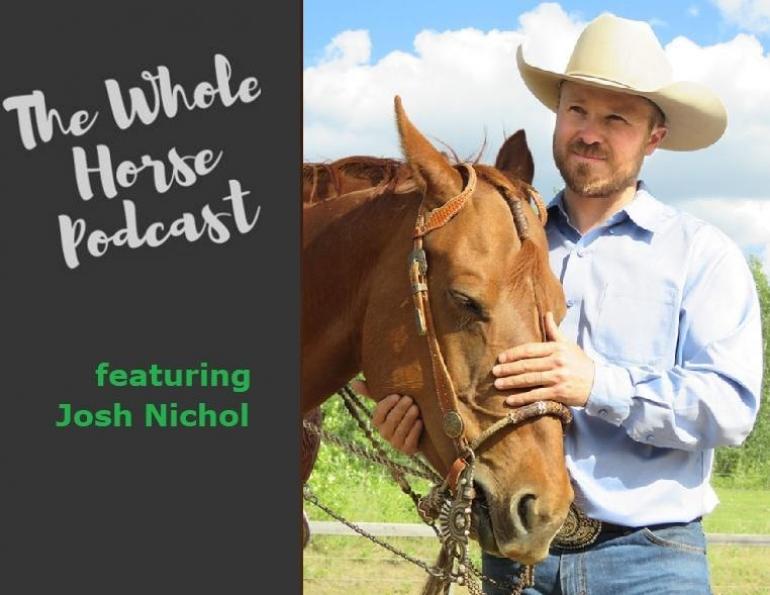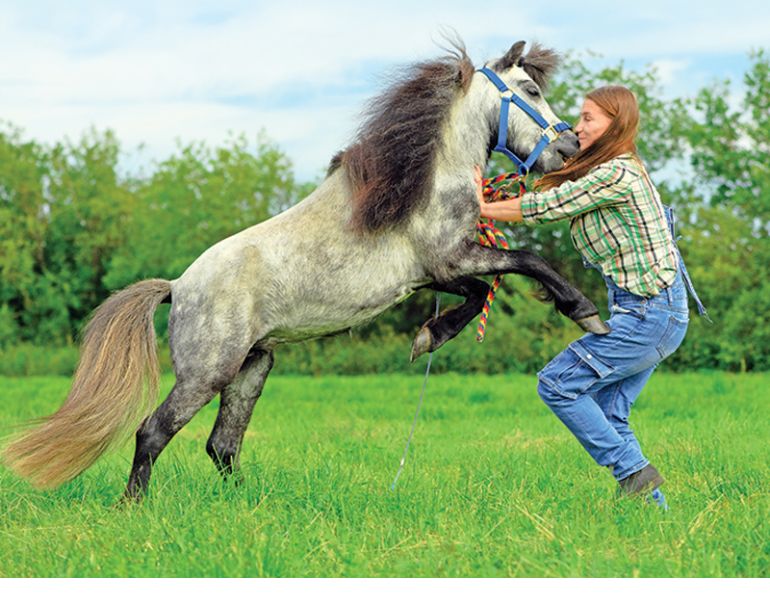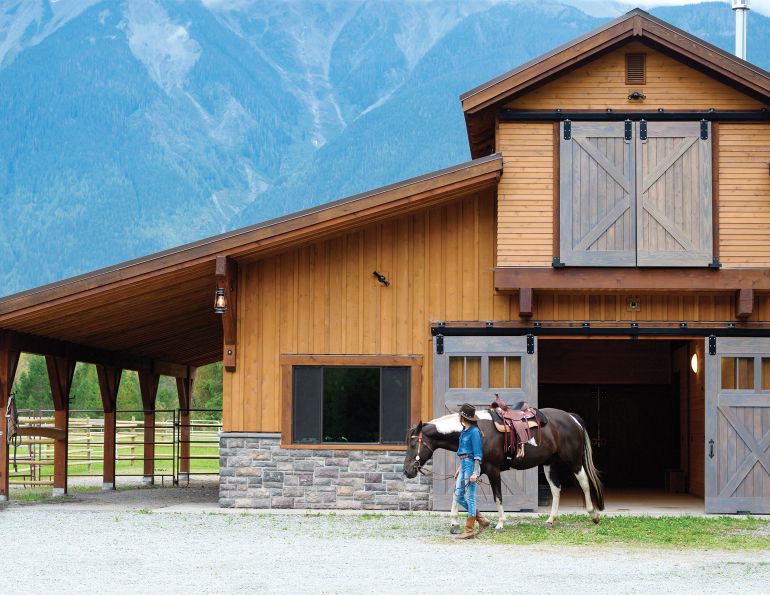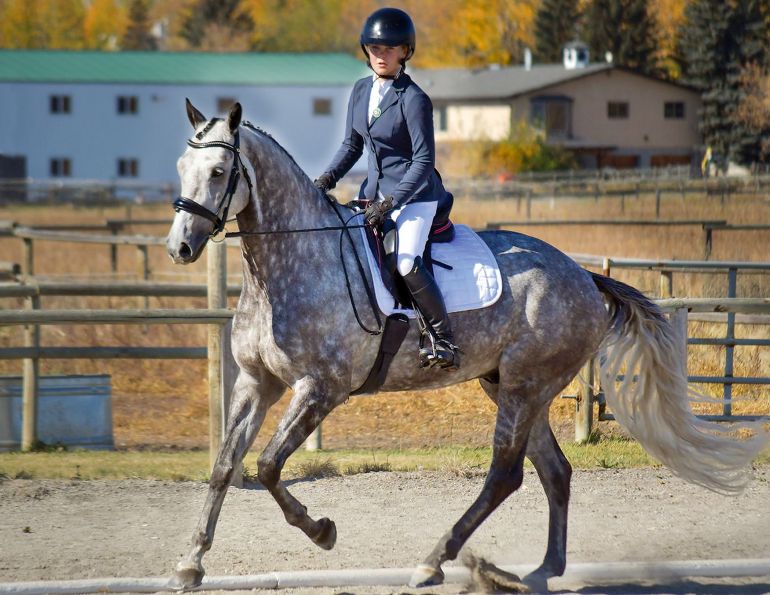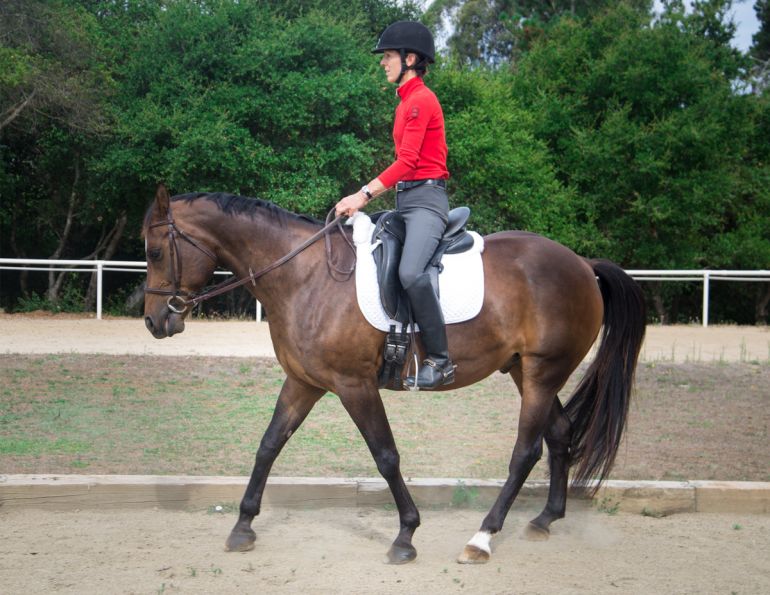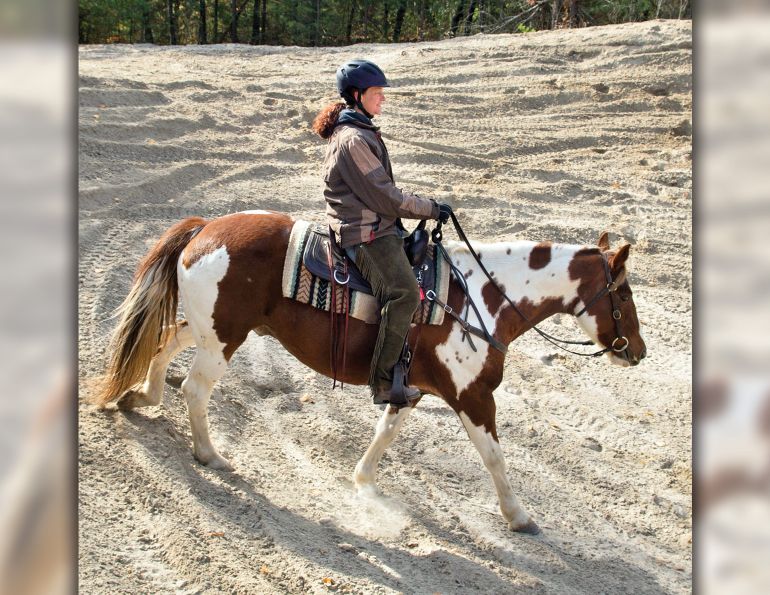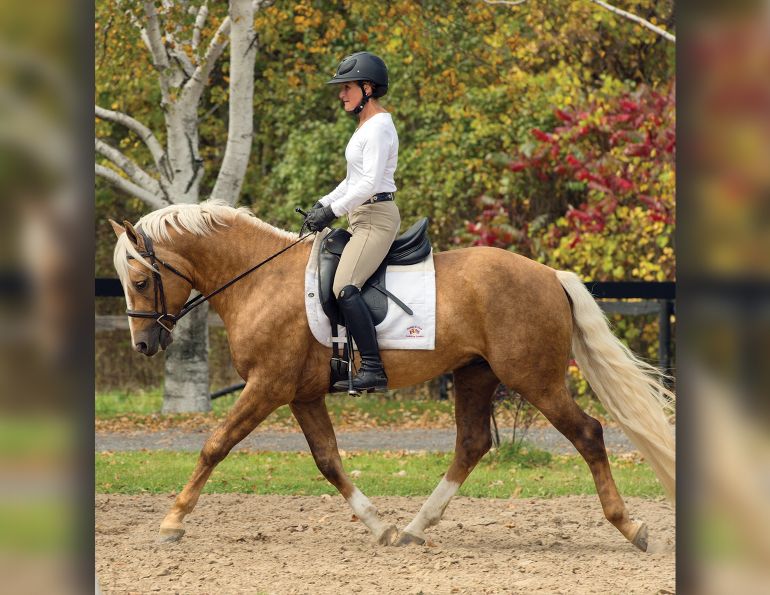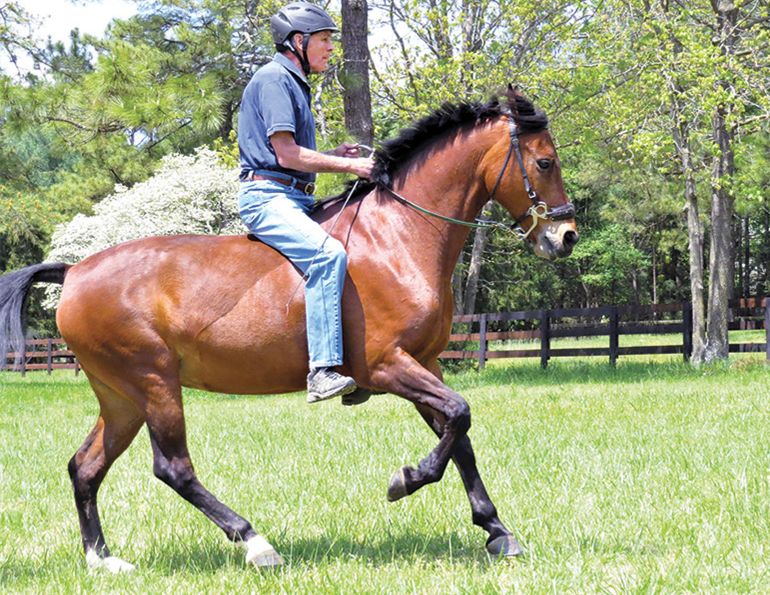By Lindsay Grice
Q: I showed my mare in some hunter and dressage shows this year and haven’t been placing as well as I had hoped. Although she is very tall and pretty with a long neck, she tends to travel in an over bridled frame and rarely has her ears forward – she just doesn’t look happy! My trainer tells me to let her neck stretch out more, but when I give her more rein, she either speeds up or raises her head. I have tried changing bit to the mildest snaffle but she doesn’t seem as responsive. Help!
A: What you describe is typical of many show horses, particularly those with long, graceful necks. Sometimes it is due to a preoccupation with “head set” before a good training foundation has been established. Picture your horse in a box, with the front opening being contained by your hand and the back opening being contained by your leg. Likely your horse is intimidated by the front opening (your hands) and so she hides in the comfort zone inside the darkness of the box, or behind the vertical. Her self-protecting tension is much like being in the dentist’s chair when you are unsure if he is going to hit a sensitive spot – it’s hard to relax!
Unfortunately, when a horse is tense through her neck and spine, there is no way to achieve that long, swinging trot and slow legged canter that we desire. Instead of lengthening, she just gets quick. The solution is to teach your mare that it is “safe” to stretch long and low and to fill out the frame of the box. The key is not necessarily in longer reins or a milder bit, but in having following, elastic hands that say “If you will stretch, I WILL go with you.”
Firstly, make a connection with your horse by resisting with your hands and asking her to yield to the bit. You will feel her soften to your hand and her ear will turn back to you in acknowledgement. This is the same as lifting a telephone receiver — you are now ready to begin a conversation. When she yields, immediately soften your elbows and follow her as long as she stretches out. If she makes a wrong choice (lifts her head up, looks to the side, speeds up, or hides even further with her nose into her chest) do not give with your hands. If you give consistently several times in a row at the moment she makes the right choice, she will deduce that the direction you want her to go is out. Often we can blow all our good progress by moving too quickly with our hands and snatching or surprising a horse.
Sensitive, rubber-like, following elbows are the mark of an educated rider and take some time to develop. Balance that with firm resistance when your horse makes the wrong choice, establish a pattern at the walk and then the trot before you canter, and you’ll be sure to have her stretching out!
Main article photo: Darlene Brain
This article was originally published in the February 2009 issue of Pacific & Prairie Horse Journal



